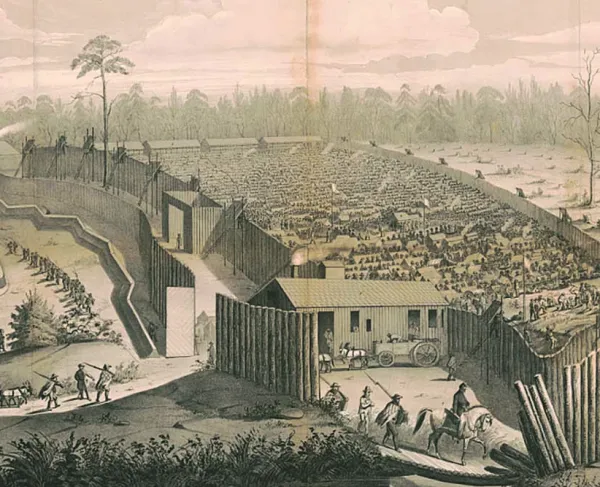Battle of Champion's Hill
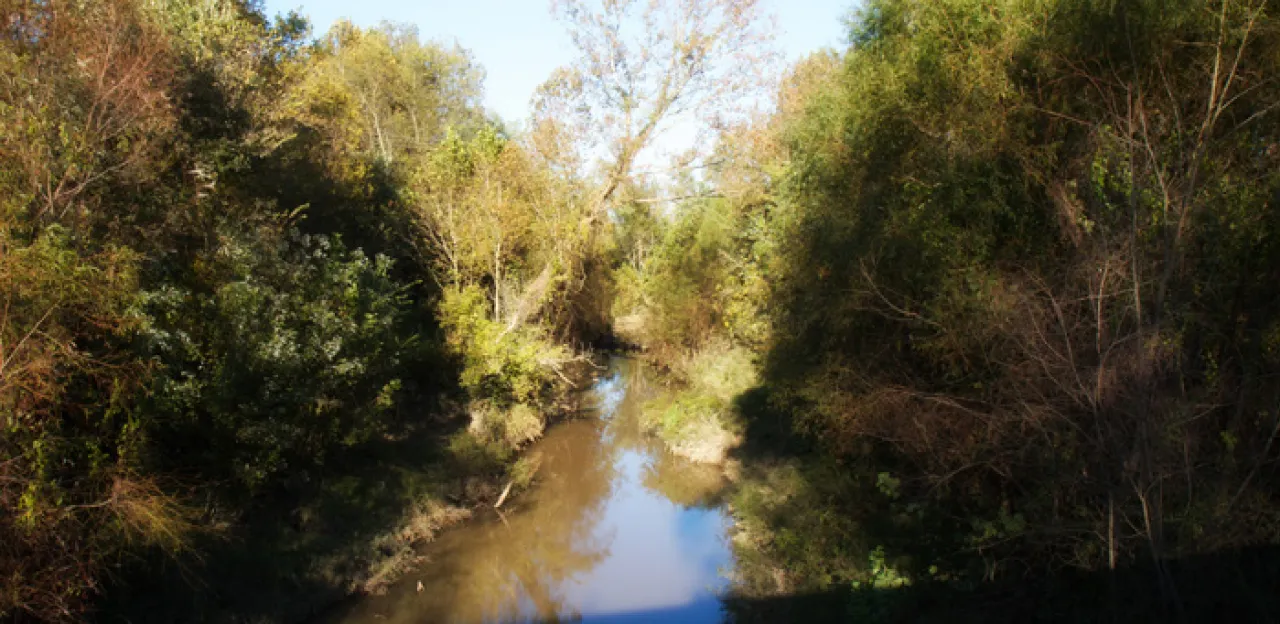
Jon Stephenson
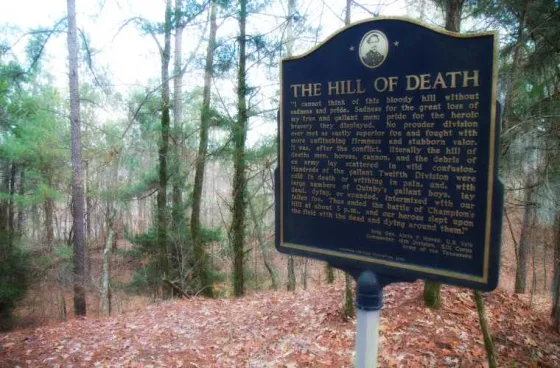
Well after dark on May 15, 1863, the tired foot soldiers of Confederate Colonel Francis Marion Cockrell’s Missouri brigade slumped gratefully to the side of the Ratliff plantation road, southwest of Edward’s Station, Mississippi. They’d gotten as far as they had by way of a winding route from the station, after a day fraught with delays and back luck. The hillsides east of the Missourians were dotted with campfires, hundreds of them, none of them friendly.
Two weeks earlier, Union Maj. Gen. Ulysses S. Grant had ferried two army corps across the Mississippi in an amphibious campaign that would not be surpassed until World War II. Having fought and won a battle at Port Gibson, Grant’s army occupied the evacuated Confederate river batteries at Grand Gulf, south of Vicksburg. From there, Grant sent word to Maj. Gen. William Tecumseh Sherman to bring up his XV Corps from the Federal winter camp at Milliken’s Bend, La. Wrote Grant, ‘The road to Vicksburg is open; all we want now are men, ammunition, and hard bread.’ That road would prove to be a rough one, but this Union commander was no stranger to adversity.
Without question, Grant was on shaky ground when he began his spring campaign for Vicksburg. Five months earlier, he’d been forced into retreat by Brig. Gen. Nathan Bedford Forrest when he tried to take the river city from the north. Sherman led an army downriver in December 1862, only to expend himself bloodily and uselessly against the formidable Confederate works on Chickasaw Bluffs, just north of Vicksburg.
There followed four separate attempts to cut a passage through the marshes and bayous of Mississippi and Louisiana that would allow the Federal armies and gunboat fleets to bypass Vicksburg. None was successful.
With these failures, the chorus of demands for Grant’s replacement reached a peak. In a blistering editorial, the New York Times wrote that ‘Grant remains stuck in the mud of northern Mississippi, his army no use to him, or anybody else.’ Rumors of Grant’s drunkenness resurfaced, and neither Union General-in-Chief Henry Halleck nor Secretary of War Edwin Stanton had much confidence in the general.
But Grant was anything but 'stuck in the mud.' Actually, he’d held out little hope for the expeditions of early 1863, allowing them largely to keep his troops busy and to occupy the attention of his critics. By early April, he’d come up with a plan he thought workable to capture the vital Confederate city.
Grant began with a series of raids in eastern and northern Mississippi to distract the Confederates while he got his army across the Mississippi. Once safely on the east bank, Grant envisioned striking the Southern Railroad of Mississippi east of Vicksburg, between Edward’s Station and Bolton Station, severing the city’s supply artery. The Union army, about 32,000 strong, began to move northeastward on May 12. There was little opposition until Maj. Gen. James Birdseye McPherson’s XVII Corps ran up against a brigade of Confederates at Raymond. The resulting battle was sharp enough, even though the grayclads were driven back to Jackson, to convince Grant that he could not turn westward to Vicksburg without first securing Jackson.
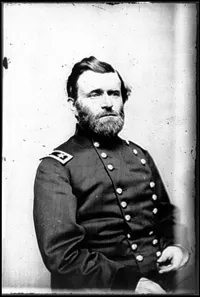
Accordingly, he attacked on the 14th, driving out the 6,000 men led by General Joseph E. Johnston, commander of the Western theater of operations for the Confederacy, who had just arrived in the city. Sherman set his men to destroying the military facilities and stores in Jackson. They were so zealous in their work that most of the city was burned, earning Mississippi’s capital the unwanted sobriquet of ‘Chimneyville.’
That night, Grant learned that Lt. Gen. John C. Pemberton had marched from Vicksburg with 25,000 men and was encamped at Edward’s Station. Grant decided to attack before Pemberton could join forces with Johnston. By first light on the 15th, Maj. Gen. John McClernand and McPherson were moving west.
If Grant was confident, Pemberton was not. He had found it increasingly difficult to resolve the conflicting orders he was receiving. Confederate President Jefferson Davis had admonished him to hold Vicksburg at all costs, while Johnston was just as insistent that Pemberton leave the river city and attack the Union forces, beginning with a Federal division at Clinton.
After conferring with his officers at Edward’s Station on May 14, Pemberton decided instead to move on a Union supply train reported to be encamped at Dillon’s plantation, west of Raymond. If this train could be captured, Pemberton reasoned, Grant’s army would be stranded in hostile country. Unaware that Jackson had fallen, Pemberton sent a courier to inform Johnston that he would march on the 15th.
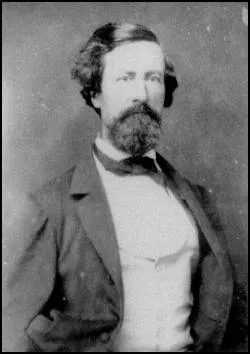
After a frustrating, morning-long wait for supplies to be brought up from Vicksburg, the Confederates marched out of Edward’s Station along the Raymond Road, only to be halted a few miles later when they found that the bridge across Baker’s Creek had been carried away during a thunderstorm. The Confederates had to detour along the creek bank north to the Jackson Road, where they crossed an intact bridge and then turned south again on the Ratliff plantation road, a little-used country lane that returned them to the Raymond Road just over a mile beyond the washed-out Baker’s Creek bridge.
It was well after dark by the time the lead division, Maj. Gen. William W. Loring’s, halted at the Ellison plantation, where the column was to turn south for Dillon’s. Pemberton established a roadblock on the Raymond Road and ordered his other two divisions to bivouac where they had halted. These were Brig. Gen. John S. Bowen’s 3rd Division at the lower end of the plantation road and Maj. Gen. Carter Stevenson’s 2nd Division from Bowen’s rear back to the crossroads—an intersection of the Jackson Road, the plantation road, and the Middle Road, which led southeastward to Raymond.
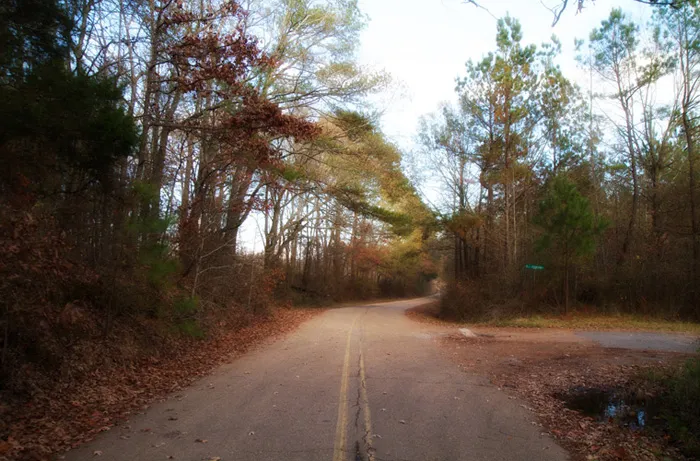
As the sun rose on the 16th, Col. Wirt Adams’ 1st Mississippi Cavalry encountered Union pickets near the roadblock. With a sharp firefight breaking out, Adams galloped back up the road to warn Pemberton. He rode into the front yard of the Ellison house just as a Federal battery opened fire on the roadblock.
While Pemberton talked with Adams, another rider drew up with a dispatch from Johnston, who was furious that Pemberton had not obeyed his earlier orders. Now, with the enemy force of unknown size in his front, Pemberton tardily elected to comply with Johnston’s instructions. He ordered Loring to delay the Federals while the rest of his army reversed its course.
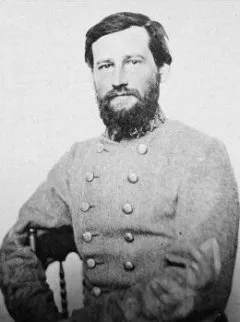
Two miles away, as the rumble of artillery fire rolled across the countryside, Stephen D. Lee, at the left of Stevenson’s division, began to worry about the still-quiet Jackson Road. Lee gathered a squad of videttes (mounted sentries) and sent them up the road to a plantation house owned by one of Pemberton’s officers, Col. Sid Champion. While his pickets moved out, Lee marched his brigade up the face of a 75-foot-high bald-crested hill about 800 yards southwest of the Champion house. This, Champion’s Hill, was the highest prominence in the area and commanded the surrounding terrain for miles.
Lee had barely gained the hilltop when a picket rushed up with word that a Federal column of at least division strength was approaching. Lee stepped to a spot where he could see the Jackson Road. When he raised his binoculars, he saw Union troops deploying in the fields on either side of the Champion house.
Lee sent a courier to warn Stevenson and shifted his brigade to the left along a ridge that jutted out from the hilltop to the northwest. He placed Captain James Waddell’s Alabama Battery on his right, just north of the crossroads, backstopped by four companies from Brig. Gen. Alfred Cumming’s Georgia brigade. The rest of Cumming’s men followed Lee’s Alabamians up the hill. Bowen dug in along the crest of a ridge running north from the Raymond Road. His artillery unlimbered atop a rise commanding Jackson’s Creek, which ran through a ravine about 600 yards to the division’s front. Loring, meanwhile, had deployed along the creek bank.
The blocking force soon came back to the line at a run. Right behind it was Brig. Gen. A.J. Smith’s lead brigade, commanded by Brig. Gen. Stephen G. Burbridge. The Federals made a hasty attempt on Loring’s line, only to be driven back when Bowen’s artillery opened a raking fire on them.
With the blocking force safe, Loring pulled back to the ridge occupied by Bowen’s division. The 1st Division dug in around the Coker house, a stately Greek Revival home with a line of towering cedars running from its broad front porch to the Raymond Road. Loring’s surgeons hastily converted the home into a field hospital.
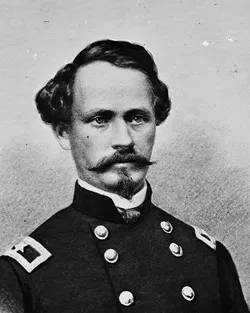
By this time, Union Brig. Gen. Alvin P. Hovey’s 12th Division, XIII Corps, had reached the Champion house, only to discover Confederates on the big hill ahead. The opposing forces were separated by intimidating terrain. Champion’s Hill rose precipitously to the northwest of the Jackson Road, its steep slopes covered with tangled, dense undergrowth. The hillside gave way abruptly to thickly forested ridges and brier-choked ravines.
Brigadier General George F. McGinnis put his 1st Brigade into line of battle and sent skirmishers forward. No sooner had they moved into the trees than an intense firefight broke out. McGinnis, satisfied as to the strength of the grayclads, pulled his men back to await further orders.
Unknown to Pemberton, a third Union column was also near, moving along the Middle Road. Brig. Gen. Peter J. Osterhaus’ 9th Division spearheaded this column. Its advance had been uneventful until Osterhaus’ vanguard came under fire from the 20th Mississippi Mounted Infantry. Osterhaus reacted at once, sending forward two regiments that quickly and painfully discovered Cumming’s and Waddell’s roadblock.
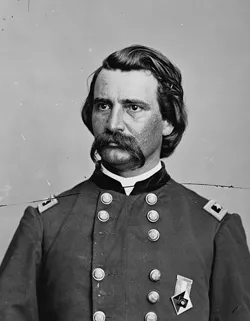
At that moment, as the battle-tested Westerners of Maj. Gen. John A. ‘Black Jack’ Logan’s division reached the Champion house, Lee realized he would have to extend his line still farther to the left to protect his flank. He shifted his brigade into a stand of trees behind a rail fence that bordered a large open field. To Lee’s right, Cumming organized his men into an angular front. A section of the Boutetort Virginia Artillery was positioned at the point of the angle, along with two of Waddell’s guns.
Grant arrived at the Champion house and assessed the situation. He immediately decided to assault the Confederate position on Champion’s Hill. McGinnis’ brigade was still in double line of battle astride the Jackson Road. Hovey’s 2nd Brigade, commanded by Col. James R. Slack, deployed in a field of rye on McGinnis’ left. Logan arrayed three brigades on Hovey’s right and unlimbered his artillery in the rear of the infantry.
At 10:30 a.m., the blue line swept forward into the deep ravines. As he watched the attack unfold, Logan noticed that Lee’s left appeared to be hanging in the air. He quickly brought forward Brig. Gen. John D. Stevenson’s 3rd Brigade. Logan ordered Stevenson to strike this weak point.
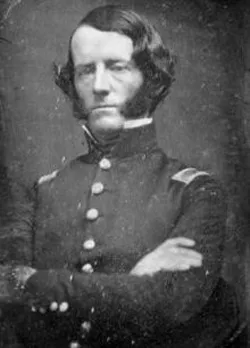
Confederate Maj. Gen. Carter Stevenson fathomed the Federal intentions quickly enough. He sent a courier to bring up Brig. Gen. Seth Barton’s 1st Brigade, then on the right of the division, just southeast of the crossroads. The Georgians double-quicked the mile and a half to the left, barely arriving in time. The Cherokee Georgia Artillery’s four 10-pounder Parrotts unlimbered in Barton’s rear, along with four guns of the 1st Mississippi Light Artillery, commanded by Captain Samuel J. Ridley.
The assault then began in earnest. The cannon behind Cumming’s salient waited until the Union line drew to within 300 yards before opening with double canister. The blast staggered the blue line, and might have shattered it had not the Federals discovered a ravine that afforded them some cover less than 75 yards from the Confederate salient.
Here, McGinnis came up with an interesting plan. His brigade was to charge, and then drop when he signaled. The men came boiling up out of the ravine. They’d taken but a few steps when McGinnis slashed his saber to the earth. The Federals dropped as one, just as the Confederate infantry fired. Before Cumming’s men could reload, the Yankees were up and among them. The fist and the musket butt were used freely and the Georgians began to give way, exposing the Alabama brigade’s flank. Lee, realizing he was about to be overrun himself, pulled his men back off the hilltop to the Jackson Road.
Slack’s Federals doggedly clawed their way through the tangled ravines until they sighted Waddell’s remaining four cannons across a cornfield. The Iowans fixed bayonets and stepped forward. The Southerners were caught completely by surprise. Waddell ordered his cannoneers to limber up, but Union sharpshooters killed or wounded most of the horses. Waddell’s men gamely tried to pull the cannons away by hand, but the Iowans were upon them too fast. The gunners fled, leaving four cannon in the hands of Slack’s men.
On the Confederate left, Barton’s line was crumbling, his Georgians unable to stem the blue tide. John Stevenson’s Yankees crossed an all but impassable hollow as if it weren’t there, charging up the ridge where Barton’s eight cannon were emplaced. As the Rebel infantry melted away, the cannoneers switched to double charges of canister, but even that couldn’t stop Stevenson’s assault.
The 1st Mississippi’s Ridley found himself standing alone at a cannon. Faced with the choice of running or giving up, he chose neither, opting instead to work the gun alone. At that moment, Union General McPherson rode up. Seeing the gallantry of the young Confederate captain, the general tried to save his life, but before McPherson could intervene, Ridley fell, struck by no less than six Minie bullets. Only eight of the 82 men Ridley had taken to the ridge top survived.
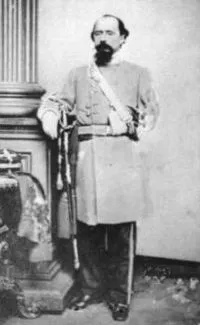
As Carter Stevenson’s line weakened, Pemberton sent a staff officer to bring up Bowen’s and Loring’s divisions. The staffer galloped off down the plantation road to Bowen’s position. One of Loring’s officers was there. He promised to pass the order along, although he had some doubts that Loring would comply.
Loring was not exactly known for his willingness to cooperate. Besides this, Loring had little faith in Pemberton, a Pennsylvania native who had ‘married South.’ When the Civil War broke out, Pemberton had chosen to cast his lot with his adopted homeland. Many politicians and officers distrusted Pemberton, and Loring had been overheard to say that he would not care if Pemberton lost a battle, so long as it resulted in the Pennsylvanian’s being relieved of command.
Back at the Roberts house, Pemberton was growing increasingly impatient. Fuming and cursing, he mounted up and rode off down the plantation road to bring up the troops himself. A short distance away, he found Col. Cockrell’s brigade, double-quicking up the road. Pemberton directed Cockrell to the crossroads to bolster Carter Stevenson’s sagging line.
Cockrell’s brigade arrived just as Slack’s charge struck. The 3rd and 5th Missouri went into line of battle at once, only to find themselves under horrendous fire. The 2nd and 6th Missouri then came up and threw their weight into the fight. Seeing that his men were gaining a foothold, Cockrell sent the 1st Missouri into line and ordered his artillery to unlimber. Bowen’s 2nd Brigade, Brig. Gen. Martin Green’s Arkansans, came up on Cockrell’s right.
Cockrell rode up and down behind the line, clutching his reins and a large magnolia blossom in one hand and his saber in the other. At a signal from Cockrell, the division unleashed an ear-splitting Rebel yell and tore into the Federals. Cockrell’s hard-charging Missourians stormed up the face of Champion’s Hill, where the fighting became, in the words of a regimental historian, ‘desperate and bloody.’ One company of Missourians reached the hilltop to find McGinnis’ Yankees just beyond. The Missourians fired with ‘one unbroken, deafening roar of musketry.’
Bowen’s men, considered by some as ‘undoubtedly the best combat troops in either army,’ swept on, driving the Union troops ‘like chaff before the wind.’ The Federals fell back so far that Cockrell’s men caught sight of Union teamsters frantically whipping their horses, desperately trying to get their ordnance wagons out of the path of the charging Confederates.
Lee, seeing the tide turn, urged his own troops onward. Private W.T. Moore, standing nearby, heard Lee shout, ‘For God’s sake, rally and drive them back!’ The Alabamians re-formed, as Moore put it, ‘as if by magic,’ and charged. They came to a rail fence bordering a field in which Captain Samuel DeGolyer’s 8th Michigan Battery was emplaced. DeGolyer opened fire just as Lee’s men began to throw down the fence rails. The Michiganders’ aim was right on. The Federal shells burst on the fence line, sending dirt, fence rails and mangled bodies flying through the air. Even the Union gunners were shocked by the sight. The shattered Alabamians began to fall back.
McGinnis had been pleading for reinforcements and, finally, Brig. Gen. Marcellus Crocker’s 7th Division of McPherson’s corps came swinging up to the front. Col. George Boomer had barely gotten his 3rd Brigade into line of battle in a field south of the Champion house when he learned that Hovey’s front had collapsed.
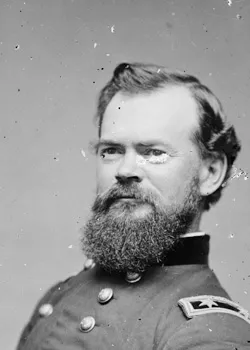
Boomer responded instantly. He shifted his brigade about by the left flank and double-quicked it up the hill, only to be almost bowled over by McGinnis’ fleeing men. Boomer’s troops faltered briefly. Stragglers told them that they had left 1,200 bodies behind on the hilltop. Boomer worried that the panic would spread to his own men, but the 3rd Brigade pressed on.
The momentum of the battle again began to favor the Federals. Col. John B. Sanborn’s 1st Brigade was moving up the hill, and Hovey had pulled together 16 cannons on a rise in an open field southeast of the Champion house. These guns showered Green’s line with canister and shot. Ordered to turn the Union left, the Arkansans pushed on into the storm, only to run squarely into the last of Crocker’s brigades, Col. Samuel Holmes’ 2nd. The firing intensified terrifically, until the men could barely make out those on either side of them. They fired by guess, aiming at muzzle flashes in the dense, sulphurous clouds of powder smoke. Eventually, the combined force of the three fresh brigades and the artillery barrage broke the Confederate charge.
Cumming, having finally rallied his men, was leading them to Bowen’s support when the Union counterassault struck. The Georgians broke and fled again, leaving behind Lee’s Alabamians, who had been sheltering in the trees since their own charge had been crushed by DeGolyer’s guns. The 30th Alabama managed to get clear before the Union line rolled over them, but Col. Michael Woods’ 46th Alabama was cut off and forced to surrender. Woods had gone into battle with more than 300 men. He surrendered just over 70.
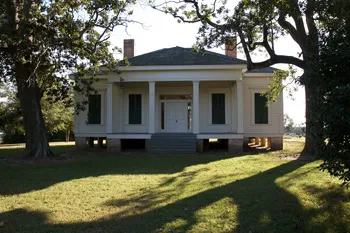
Pemberton was furious that Loring had still not appeared. He sent Major Jacob Thompson, his assistant inspector general, to again order the recalcitrant Loring to come up with all possible speed. Thompson dutifully galloped off to the Raymond Road, where he discovered that Loring had realigned his division somewhat, but had made no attempt to move to the left. Loring had shifted two brigades onto the ground that Bowen had vacated, and Brig. Gen. Lloyd Tilghman’s 1st Brigade sat astride the Raymond Road on Cotton Hill, about 600 yards west of the ridge where sat the Coker house. Burbridge now held the ground near the Coker house, which was filled with Confederate wounded.
Although Burbridge had not pressed further, Loring was still unwilling to disengage. Thompson returned to the Roberts house with this unpleasant news just as Osterhaus renewed his drive on the Middle Road. Exasperated, Pemberton mounted to go after his errant commander himself. As before, he’d gone only a short distance when he sighted Brig. Gen. Abraham Buford’s brigade. The much-relieved Pemberton told Buford to send two regiments to the crossroads to support Green and the remainder of his brigade to the Jackson Road. These orders delivered, Pemberton continued his search for Loring.
The 12th Louisiana and 35th Alabama rushed to the support of Cockrell’s artillery, which had opened fire on Osterhaus’ line. This barrage slowed the Union drive somewhat, but the Federals kept up the pressure. Many of Bowen’s battered foot soldiers, having endured more than they could take, broke and ran. In the course of the melee, Waddell’s unlucky cannon changed hands for the third time.
Pemberton, unable to locate Loring, returned to the Roberts house. There, he was told that Bowen’s line had broken. Sadly, Pemberton ordered a general retreat. The Confederates would have to pull back to the Raymond Road, where they could cross a bridge that Pemberton’s engineers had labored all day to build. The general mounted and rode away with his staff officers.
Pemberton had been gone only a few minutes when Loring appeared on the scene, leading Winfield S. Featherston’s 2nd Brigade. He saw that many of Carter Stevenson’s troops were still on the field, as were Buford’s. Loring began to piece together a counterattack, but before he could complete his disposition, word of the retreat order reached him. Loring countermanded his attack orders and began to disengage.
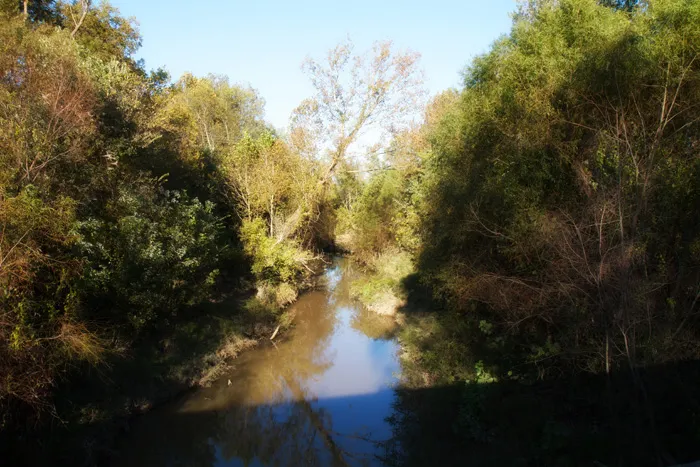
The Confederates flowed back down the plantation road, pouring across the Baker’s Creek bridge. Harried sergeants got them back into line along the west bank of the creek. At the crossroads, the Federals pulled up. The heat was taking its toll on the soldiers, and their officers allowed them to rest.
East of the Baker’s Creek bridge, Tilghman’s brigade still blocked the Raymond Road. Suddenly, A.J. Smith’s artillery opened fire. A moment later, the Confederate batteries responded. Shells arched across the valley, landing short of the Union guns.
Tilghman cursed and went to the nearest gun, sighting it himself. Satisfied, the general stepped back to observe the fire. As he did, the Union battery spoke again. A shell exploded directly over Tilghman. He staggered back a few steps and fell, a chunk of shrapnel in his chest. A minute later, he was dead.
Col. A.E. Reynolds took command of the brigade. Learning that his artillery was almost out of ammunition, Reynolds moved off the road and turned toward Baker’s Creek. He neared the bridge just as the rest of Loring’s division regained the Raymond Road. Reynolds fell in at the rear of the division as it hastened for the bridge. Before Loring could get there, however, artillery shells were falling across the creek. A Federal brigade had crossed the creek on the Jackson Road and had pushed south, hoping to cut off the Confederates' escape.
On the west bank, Bowen and Stevenson put their divisions on the march at once. Realizing he could not cross the bridge, Loring turned south, moving down the east bank in search of another ford. After darkness and muddy roads forced him to abandon his artillery and ordnance wagons, Loring gave up on rejoining Pemberton. He followed a circuitous route to Crystal Springs and entrained his men for Jackson.
Pemberton’s remaining two divisions painfully marched to fortifications built earlier at the railroad bridge over the Big Black River. The battered grayclads gratefully bivouacked there for the night, joined by the fresh troops of Brig. Gen. J.C. Vaughn’s East Tennessee Brigade.
The Union forces encamped on the bloodied slopes of Champion’s Hill. They struggled for sleep as hospital teams prowled among them by torchlight, searching for wounded. Hovey was almost in shock as he surveyed the battlefield. ‘Champion Hill was, after the battle, literally the hill of death,’ he wrote. ‘Men, horses, cannon, and the debris of an army lay scattered in wild confusion. Hundreds of the gallant Twelfth Division were cold in death or writhing in pain, and…lay dead, dying, or wounded, intermixed with our fallen foe.’
The Confederates had suffered 381 killed and better than 3,400 wounded or missing. The Union army lost 410 killed and just over 2,000 wounded or missing.
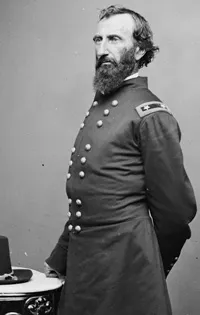
Early on the 17th, McClernand’s fired-up XIII Corps struck the Big Black line with such fury that the battle-weary Confederates broke and ran. Their panic spread to Vaughn’s Tennesseans and very quickly they, too, were fully routed. The stunned Confederates retreated to the Vicksburg fortifications. Grant was right on their heels. He laid siege to the river city and, nearly seven weeks later, it was his.
Grant would no longer have to worry about his critics. He went on to establish the ‘cracker line’ at Chattanooga, breaking Braxton Bragg’s grip on the Union army trapped there, and to the bitter fighting at the Wilderness, where Grant swore that his army had taken its last backward step. He moved on through Cold Harbor and Petersburg, until eventually he caught up with Robert E. Lee in Wilmer McLean’s parlor at Appomattox.
But had Pemberton joined his army with that of Joe Johnston right away, had Loring moved his division to Carter Stevenon’s aid when Pemberton first summoned him, or had Grant been defeated that day on Sid Champion’s plantation, Vicksburg might not have fallen. Grant would almost certainly have been relieved of command, and history would now read very differently, were it not for the drums of Champion’s Hill.
This article was written by Jon Stephenson and originally appeared in the September 1999 issue of America’s Civil War magazine. Used with permission from historynet.com.
See every dollar matched $6.50-to-$1 when you make a gift to nearly 32 acres of prime, unprotected battlefield land at Chickasaw Bayou and Champion...

